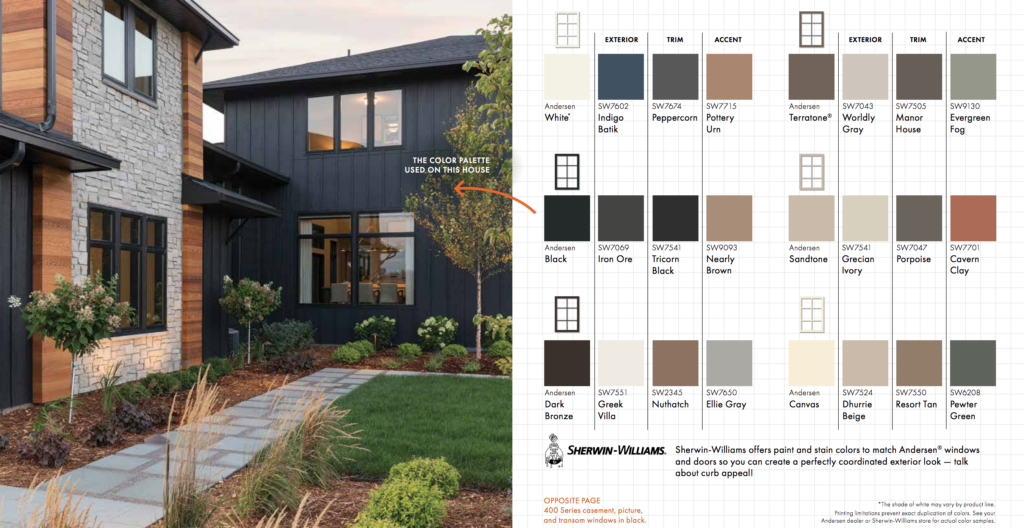Why Spring is the Perfect Time to Upgrade Your Windows and Doors
As the days get longer and the weather warmer, spring offers the perfect opportunity to refresh your home. It's not just about planting flowers or giving your home a fresh coat of paint—spring is also the ideal time to think about upgrading your windows and doors. Here’s why spring is the perfect time to upgrade your windows and doors.
1. Improve Energy Efficiency
Spring is often a transition period when the temperatures are mild, but your home’s energy efficiency still matters. If your windows and doors are old or worn out, they might be allowing drafts, causing your heating or cooling system to work harder than it needs to. New, energy-efficient windows and doors can help regulate the temperature in your home, reducing energy costs while keeping you comfortable throughout the year.
2. Enhance Curb Appeal
Spring is all about renewal, and your home’s exterior can play a huge role in creating a welcoming atmosphere. New windows and doors can completely enhance the curb appeal of your home. Whether you’re looking for a more modern look or something classic, upgrading your windows and doors can instantly transform your home’s appearance and give it a fresh, updated feel.
3. Increase Natural Light
With longer days and sunnier skies, spring is the perfect time to let in more natural light. Consider replacing old, inefficient windows with larger, energy-efficient options that will brighten your home and reduce your reliance on artificial lighting. Doors with glass panels or sliding doors can also open up a space and let in more sunshine, helping you enjoy the beauty of the season from the comfort of your home.
4. Boost Home Security
As the weather gets nicer, more people are spending time outside, and you may be more likely to leave your windows and doors open to let in the fresh air. But, if your windows and doors are outdated or damaged, they might not be as secure as they should be. Investing in high-quality, secure windows and doors can give you peace of mind knowing your home is protected, even when you’re enjoying the great outdoors.
5. Reduce Noise Pollution
Spring often brings more outdoor activity—whether it's kids playing, lawnmowers running, or neighborhood gatherings. If you live in a busy area, you might be noticing more noise in your home as the weather warms up. Replacing old windows and doors with soundproof options can help reduce noise pollution and create a more peaceful environment inside.
6. Maximize Indoor-Outdoor Living
With spring comes the desire to spend more time outdoors, whether you’re hosting a BBQ or simply enjoying the garden. Sliding glass doors, French doors, or new windows that open up to a deck or patio can help blend your indoor and outdoor spaces seamlessly, making your home feel larger and more inviting. This spring, why not create a flow between your home and garden that you can enjoy all season long?
7. Prepare for Summer Heat
As we head toward summer, you’ll want to ensure your home is ready to handle the warmer temperatures. Replacing outdated windows and doors with modern, insulated, and energy-efficient models can help keep your home cool during the hotter months. In addition to reducing energy bills, these upgrades ensure that you can enjoy a comfortable home even when the sun is beating down.
Why Choose Us for Your Spring Window and Door Upgrade?
At [Company Name], we specialize in providing high-quality windows and doors that are designed to enhance your home’s beauty, energy efficiency, and security. Our expert team will guide you through the selection process to find the best options for your needs, whether you’re looking to improve curb appeal, save on energy bills, or boost your home’s security.
We understand that replacing windows and doors is a big decision, and we’re here to ensure a smooth and stress-free installation process. With a wide variety of styles, colors, and materials to choose from, we can help you create the perfect look for your home.
Spring is the Perfect Time to Upgrade Your Windows and Doors - Ready to get started? Contact us today for a free consultation and see how we can help you bring more light, comfort, and beauty into your home this season!
If you are looking to upgrade your windows and doors this spring near Carmel, Indiana - be sure to schedule your free consultation with us!
Make sure to follow us on Facebook to stay up to date with all things Modern Day Window!








